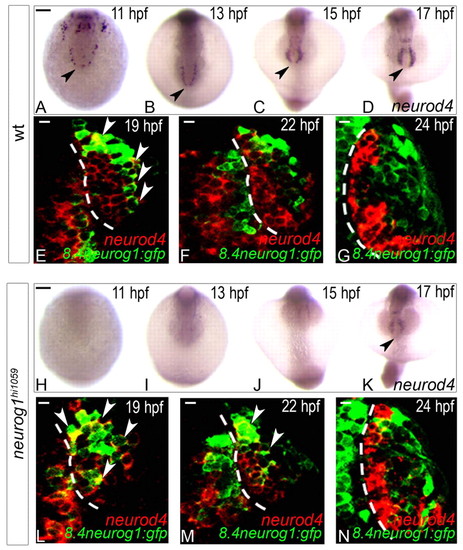
Expression of neurod4 in the zebrafish olfactory anlage is dependent on neurog1 at early but not late stages. (A-D,H-K) Whole-mount in situ hybridisation against neurod4 in wild-type (A-D) and neurog1 mutant (H-K) embryos at 11 (A,H), 13 (B,I), 15 (C,J) and 17 (D,K) hpf. Although neurod4 expression is absent in mutant embryos up to 15 hpf, expression recovers to wild-type levels at 17 hpf. Embryos are viewed dorsally with anterior down; black arrowheads indicate the mixed telencephalo-olfactory expression domain. (E-G,L-N) Single confocal sections of in situ hybridisation and immunolabelling against neurod4 and GFP from the Tg(8.4neurog1:GFP) transgene in the olfactory placode of wild-type (E-G) or neurog1 mutant (L-N) embryos at 19 (E,L), 22 (F,M) and 24 (G,N) hpf. At 24 hpf, neurod4 is restricted to cells of the olfactory placode immediately adjacent to the telencephalon and is excluded from Tg(8.4neurog1:gfp)-positive early-born olfactory neurons. White arrowheads indicate double-labelled cells. Dashed white line indicates the boundary of the telencephalon and the olfactory placode. Scale bars: in A, 100 μM for A-D; in H, 100 μM for H-K; in E-G,L-N, 10 μm.
|

